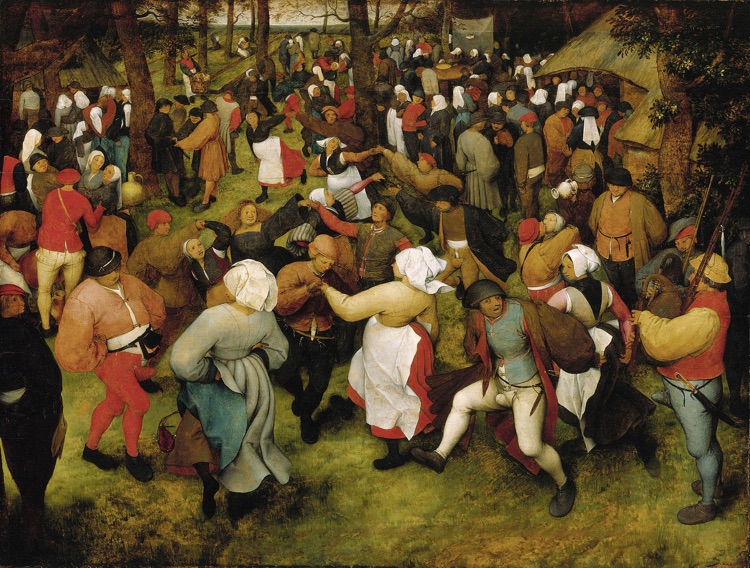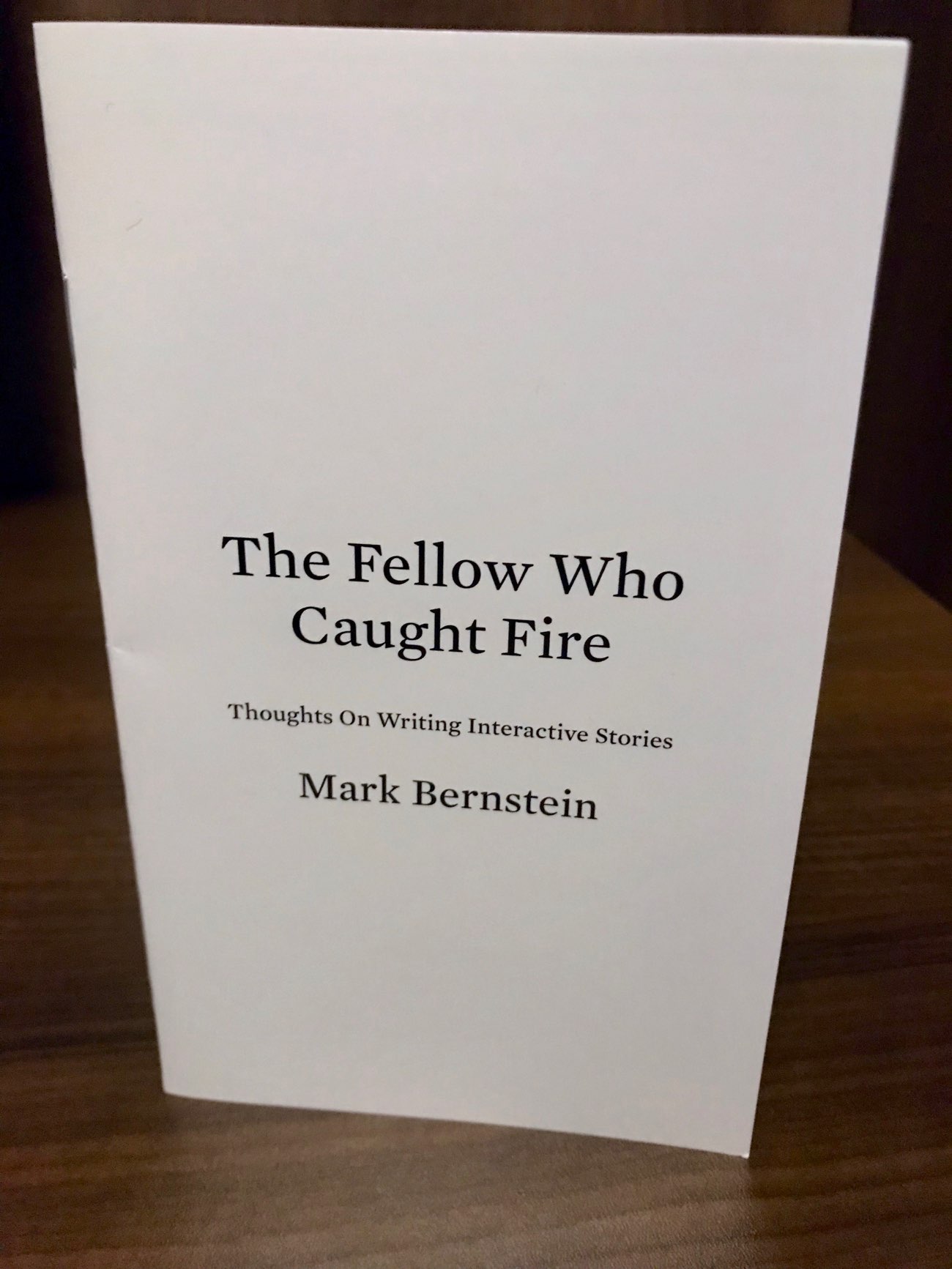by Ta-Nehisi Coates
Brilliant, vivid, indispensable. This book is destined for the shelf which The Souls Of Black Folk has so long had to itself.
Brilliant, vivid, indispensable. This book is destined for the shelf which The Souls Of Black Folk has so long had to itself.
The narrator, a synthetic cyborg developed to provide security for planetary explorers, thinks of himself as a murderbot. He exists to protect people, but he has no high opinion of people and he heartily disliked them. Really, he’d much rather be left alone to watch videos than have to risk his life for these unpleasant creatures. Still, he’s not happy about a job that requires him to kill so often, even if it’s necessary to save his clients.
One day in April 1903, a bunch of school kids in the small city of Kishinev started throwing rocks and slogans at some houses where Jews lived. That wasn’t unusual. But things got out of hand this time: three nights of rioting follower, 49 Jews were killed, hundreds were raped, and the whole world was watching. Correspondents poured into Kishinev from London and Dublin and New York. Hayyim Nahman Bialik composed an epic poem, In The City of Slaughter, that would become a staple of Hebrew studies for generations. At the same time, a far-right newspaper editor in Kishinev concocted an imaginative libel, the Protocols of the Elders of Zion, that captured a lot of attention as well. Zipperstein captures the time and place with care and intelligence.
Everything you need to know — and more — about the history of Jewish humor, with a special emphasis on the 20th century US. When you were in the writers’s room, the whole world was Jewish.
From my position in the hallway — on my ass, head pressed against the door frame, legs drawn up with my gun held two-handed against my sternum — I try to recall the layout of the room: three sets of bunk beds, four corpses sprawled across bloodied sheets, my partner, shot three times, lying motionless next to the nearest bunk, and, somewhere in there, one lunatic, a screaming infant in one hand and a semiautomatic pivot in the other. The last time I sneaked a look around the open doorway, he fired at me, the bullet knocking a crater in the wall opposite. He followed up by threatening to shoot the baby and then himself.
I’ve been a cop for five months, one week, and nine and a half hours.
Sure is a fine way to kick off a police procedural.
At ICIDS, Sarah Baylus gave a fascinating keynote about her writing team’s work on Divinity: Original Sin 2. This is a new D&D-descended adventure which features more than a million words of complex, branching dialogue with myriad characters you might encounter in the game world. You meet a character, ask questions, and various quests or puzzles may fall out in consequence.
The characters she described — and characters familiar from similar games — tend to be vivid and singular. They present themselves with one or two singular oddities — deformities, really — that cannot be mistaken and that stick in the mind. This addresses several basic design forces:
This recalls, in my mind, Bruegel’s peasants and Hogarth’s street scenes — and perhaps a bit of Bosch, too. We don’t want the little people to fade too far into the landscape, so we give each one their own absurdity.

One of Baylus’s examples, for example, deals with an encounter with a shepherd whose flock has been pilfered. She warns you:
If you’ve go a favorite sheep, best to fry’er up now ’fore she gets thieved in the night like my dear plump Hoggett — the finest in my herd!
1. Tell me about yourself.
2. Where’s your herd?
3. About your stolen sheep…
4. I’ll take my leave.
I’m not entirely wild about frying up one’s favorite sheep. Unless plump Hoggett was actually as lamb, I’d expect a slow braise would be more to the point, which a few bits saved for roasting. I’m also doubtful that this shepherd, who takes the time to assign a gender to her dear Hoggett, would have called her a sheep and not a ewe. The people we meet speak dialect, but we ourselves don’t. Who takes their leave, outside Jane Austen?
The underlying problem here, I think, is that we have too big a cast and too little to do with any character who isn’t The Boss. It’s one thing to write a Parsifal where we come to town, blow stuff up, and then ride on: you don’t need to retain state because you’ll be gone in the morning, but everyone has to be very different or all the towns will be alike.
A second problem, of course, is that Baylus’s studio had to develop its own hypertext system to represent the branching dialogue, and that tool seems to have been invented without reference to anything we’ve done in the research community. There’s nothing specifically targeting the problem, but of course all the sculptural hypertext work is relevant, all the chatbot work might be relevant, and you could surely find some good ideas in the Façade/Prom Week lineage, too. I’d have liked to have seen more detail what they did create, and hear more about how it worked.

Canvassing — knocking on the doors of likely supporters — is the way Democrats win campaigns. This is Gospel: every field organizer I’ve ever worked with believes it, and they will all tell you that everything depends on it. Almost the entire curriculum of Swing Left Academy involved some aspect of canvassing. It’s a subtle art: Massachusetts super-volunteer Kate Donahue distilled her tips for canvassing into 51 invaluable tips.
Canvassing is understood to be the flip side of fundraising and advertising. Money and ads are the province of professional consultants: canvassing is assigned to volunteers and entry-level field directors. Ads do what they can do; canvassing can swing a few percentage points of turnout, which makes the difference in many, many races. Importantly for the campaign, canvassing seems to be almost free: a little bit of rent for temporary field headquarters — often using dead retail or unrentable office space, a few pizzas, and some clipboards.
We need think this through.
Consider my 2018 Last Weekend in Minnesota. I pulled 9 3-hour shifts from Friday night through Tuesday evening, divided between one office in MN-01 (where Dan Feehan narrowly lost) and two offices in MN-02 (where Abby Craig won). I also did several shifts of email support, a good deal of social media writing, and an article in my downtime, but none of that counts: everything is about knocking doors.
The problem is: this simply isn’t true. Take my final shift, late Election Day, in Hastings Minnesota. It had been drizzling all weekend; now it began to snow. It was windy. It was cold. And it was dark: fortunately, I remembered to ask the field organizer for a flashlight. (They had an entire bag of flashlights on hand, but how was I to know?)
In three hours of walking up and down streets, searching out our supporters to remind them to vote, I spoke with one person who had not voted and who might like to. We chatted at the door of her home while she balanced an infant on her hip, tried to keep toddler 1 from running out the door, failed to prevent the dog from getting outside, and coped with shy toddler 2 who wanted to know what was going on but also to be invisible. So, sure, she hoped to get to the polls, but she was juggling a lot of stuff and it might be tricky.
Everyone else had already voted. My turf that night was three suburban streets in a high-turnout precinct in one of the highest-turnout Congressional districts in the entire country. Some of my doors were literally across the street from the polling place, which had no lines and tons of parking.
We could have avoided all this with poll watching, but we didn’t do poll watching at all.
Was this the very best use of my time?
In the formative age of the modern Democratic Party, our volunteers were farmhands and longshoremen. Doctors, lawyers, professors, writers — they were Republican. We shaped our tasks to our people: what we could do was talk to people like us, and so we did. We couldn’t talk policy or run numbers or write, but we were OK at what Vachel Lindsay called “all the funny circus silks of politics.” So that’s what we did.
But that’s not today’s Democratic volunteer. Joe The Plumber isn’t coming through that door. We don’t have the stevedores and the gandy dancers: those jobs are gone, mostly, and the remaining handful are mostly Trumpists. Our volunteers have changed, but we’re still doing the same thing.
Our canvassers in Minnesota were a great range of ages. Swing Left’s college fellows were outstanding and capable, so the colleges were a great resource. Our national emergency brought out lots of middle-aged volunteers. Even so, the typical Democratic volunteer is ancient. I had volunteers on my team in their 90s. In Massachusetts, volunteers skew even older.
We’re asking a lot of old people to spend a lot of time walking up and down stairs in the wintry rain and snow.
If we ask people to do many hours of unrewarding work — especially in unhealthy and uncomfortable conditions — they may not come back for more. My own parents worked hard for Adlai (and Abner Mikva), somewhat less hard for JFK, and after that they called it a day. I expect we lose many of our younger volunteers after each election — and by “younger,” I mean merely “not elderly.”
We tell volunteers that canvassing is all-important. Yet, I’ve never worked on a campaign that had anything like sufficient collateral for canvassers. We spend millions on ads, but for the supremely-important canvassing operation we almost never have enough buttons, t shirts, lawn signs, or brochures.
In the past decade, I have never been canvassed. I’m a conspicuous D voter in a precinct with lots of canvass activity, but you can’t knock my door because, when you do, I’m almost certainly at work.
It’s not just me. If you aren’t sitting around your house in the early weekday evening or on weekend afternoons, canvassing is going to miss you. If your job requires long hours, if the 40-hour week isn’t your life, canvassing won’t find you. If you’re a medical resident or an intern, you’re going to be invisible. If you live in an apartment, you’re going to be hard to canvass. A dormitory? Good luck!
One of the ideas behind canvassing is that people might be inclined to listen to folk like them. In our increasingly-fragmented political world, that might be an illusion. In Minnesota, I was asked to knock on a ton of doors that prominently displayed crucifixes, Evangelical slogans, and the like; for the first time in my experience, I had real doubts that these were people I could possibly approach.
Conversely, the only voter who I know I actually flipped in the entire nine shifts was an elderly black medical retiree, a charming woman, for whom I was also not the ideal canvasser. She’d been fed a lie about Medicare by a Trump supporter and it had shaken her support for Angie Craig; fortunately, it was an easy lie to refute and that was that.
We need to understand that connecting with voters is more than knocking on the doors of old ladies who don’t go out. Contact matters: the medium matters less. Thoughtful personal letters (and why must our letters be anonymous?) make sense to me. Text messages. Web outreach.
Ads reach millions. Canvassing and phone banks reaches a handful. There’s a huge intermediate range of writing and performance that can reach hundreds or thousands of readers, speaking to them in places where they already are reading and writing.
We need to think that through before 2020.
The slides and the paper from my talk (co-authored with Dr. Clare Hooper) delivered today at Trinity College, Dublin.
A reminder of the power of stories: slides 2-4.
The man in the moon must lead a queer life with no one to talk to — not even a wife. No friends to console him, no children to kiss, no chance of attending a conference like this. (?Trad?)
Once upon a time there was a poor little boy who had no father and mother; everything was dead … And since there was no-one left on earth he decided to go up to heaven where the moon shone down so kind. But when he got to the moon it was a lump of rotten wood. (Georg Buchner, Woyzeck sc 21.)
Say, its only a paper moon
Sailing over a cardboard sea.
But it wouldn't be make-believe
If you believed in me. (Harold Arlen)

Arrived very early, zoomed through the airport, and arrived at the pub where I’m staying far, far too early. So I left my bags and spent the day walking through streets and museums, more streets and more museums, working to acclimate and ignore the time difference.
I’d not visited the National Gallery before. It’s got a very interesting collection, and really good gallery guides. There’s a national portrait competition that has some really interesting work. Here’s Miseon Lee’s “Me In The Mirror” (2018):

And this oil of Mary-Kate Lanigan by Nicholas Benedict Robinson is a painting I’d like to study.

What I want to say is that, reading the program for this conference, there's clearly a lot of interest in the tension between narrative and “science”, by which people sometimes mean “analysis” and sometimes mean “clinical observation.” I’m entirely on the side of science, broadly construed. Even in the arts, we can reason carefully and without interest from close observation of actual phenomena, and among those phenomena might well be our own response to the work.
Yet, looking over the program, I am also struck by an unmistakable sense of alienation: the problems this discipline studies simply aren’t the problems I confront when I sit down to write interactive stories. I've put together a tiny twenty-page chapbook about these problems:
THE FELLOW WHO CAUGHT FIRE
Thoughts On Writing Interactive Stories
On the left of each page spread, I sketch a very short story about a post-doc who solves a tremendous problem. He’s done what everyone in the university dreams about. He’s benefited mankind. He’s famous. He’s going to be tenured. He’s going to have plenty of money.
He’s the loneliest man in the world.
On the right hand of each spread, I talk about technical choices I made in writing this tiny story. They include:
Now, at ICIDS, a technical choice is often a choice about algorithm or implementation, and the aren’t necessarily that kind of choice, but surely they are choice about technique. I could tell the story from the point of view of poor Prometheus. Or I could tell it from the point of view of his research advisor. I could tell it from the point of view of his girlfriend, who was having doubts before her boyfriend had a publicist and a security detail. I could make it a club story. I could shift points of view: we think of that as avant-garde, but Robert Louis Stevenson did it in Treasure Island simply because he wrote himself into a corner and suddenly switching narrators for one chapter was the way out.


I’m off to the International Conference on Interactive Digital Storytelling at Trinity College, Dublin, where I’m giving a paper (with Dr. Clare Hooper) titled “A Villain’s Guide To Social Media and Interactive Storytelling.”
This is adapted from our Hypertext ’18 paper on villainy and social media, but digital storytelling is even more vulnerable to villainy than the Web. Almost all the villainies that apply to Twitter and Facebook — trolling, de-anonymizing, recruitment of villains, stealing candy from babies — inhere just as much in multiplayer games, Facebook entertainments, and interactive fictions. In addition, we also have the tons of research exquisitely attuned to the cultivation of victims who suffer from mild mental derangement that leave them vulnerable to spending vast amounts of money on Candy Crush and to following charismatic crackpots.
Plato saw the problem with fiction as lies and fake news, and he was not wrong. But we also see the perils of projection and transference. Gamification in social media is the political repurposing of transference: if Milo can hand you rewards or quatloos or followers, Milo loves you and you (of course) love Milo. It doesn't matter that you know the object of desire isn't real, that she’s a computational construct in an imaginary world:
She was a tree elf named Riyah. He was a water elf, Tildor. They came from different realms, but for the past three nights they’d qwested, traded, and killed together. They had hunted basilisks, slain dragons, and retrieved two diamonds, which Riyah carried in the bag hanging at her waist. She was an amazing marksman and beautiful, even for an Elf, her eyes huge, her body supple. Her breasts swayed as she ran, her quiver bouncing behind her. — The Chalk Artist, p.24
Of course, Riyah isn’t precisely real: she’s an actor, employed to please game fanatics like Tildor. But she is also real, and the boy who is Tildor meets her in a stairwell at a conference. He’ll do anything for her. Of course he will.
We’re really quite good at finding weakness and depravity through new media, and at recruiting an audience vulnerable and eager to be deceived. The religious right and the extremist right have spent a decade reading our research and then deploying it to give us Trump and Brexit, the death penalty for seeking an abortion, Golden Dawn, UKIP, and Jobbik. If you know of any papers that help us find and retain an audience of the wise and virtuous, I’d like to know about them.
The dangers of fiction have always been tempered by the fact that the storyteller had to take the audience as she found it. In the market of ideas, anyone might wander by, and anyone can heckle. New media lets us tune the story to each reader, which means that new media, in villainous hands, can tune the story to each reader’s weakness while taking care that readers who are not weak (or who are Democrats) don’t even know there’s a story until it’s far, far too late.